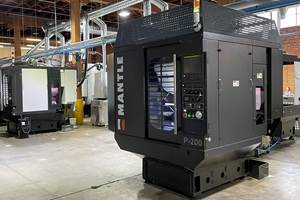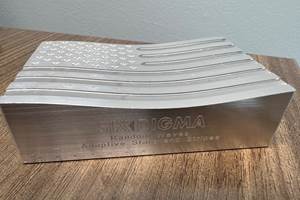Are Your CNC Machinist Job Descriptions Outdated?
Traditional machine shop job descriptions might not draw interest from the talented, young people your shop needs to grow.
Share





In 2016, Justin Quinn became owner and president of Focused On Machining, a 10-person job shop located in Denver, Colorado. Prior to purchasing the company, Mr. Quinn was an aircraft mechanic in the U.S. Air Force and then worked as a commercial banker. Having always wanted to own his own business, he saw an opportunity in manufacturing. He realized that there are numerous baby boomer shop owners who are eyeing retirement and considering business exit strategies.
After purchasing the shop, Mr. Quinn parted ways with a couple employees and sought to fill their positions. He initially used what he says is a traditional job description for a machining business, one that asked about specific machine shop experience and talents, and also described common daily tasks using words like “operating a mill” or “using hand gages to measure parts.”
What he discovered is that this job description did not draw what in his mind were quality candidates. Many had bounced around between numerous area shops over the course of their dot-to-dot work history. Some thought they knew it all when it came to CNC machining. Still others displayed virtually zero enthusiasm or appreciation for the work the shop was performing for its customers. Plus, not many were young.
In his mid-30s, Mr. Quinn finds himself straddling the line between Gen Xers and millennials, giving him a good idea as to what makes both generations tick. He realized that for his shop to succeed and grow, he had to make opportunities there enticing for younger millennials, so he and a sharp young employee worked to create a new job description that would better catch that group’s attention.
The job descriptions they developed do not ask about a person’s shop experience or credentials. Instead, they describe duties such as working with one’s hands, crafting new products, using CAD software and so on. “We also made sure our company description highlighted what we feel are attractive traits beyond vacation pay and a healthcare plan, including a four-day work week, flexible schedules and a fun environment,” Mr. Quinn explains. “We wanted people to understand that they could enjoy a career here and still live the lifestyle they desired outside of work.”
It worked. The new job descriptions brought in younger, more enthusiastic applicants. Many did not have direct CNC machining backgrounds, but they had experience in mechanically oriented fields such as auto mechanics, furniture manufacturing and bicycle repair.
One of the two people Mr. Quinn hired used to make trade show displays at his previous job, where he sometimes used a CNC router for such work. “We gave him proven programs to set up and run on an old CNC machine,” Mr. Quinn says. “He is now operating a 2014 vertical machining center. His scrap rate is getting lower, and he is learning every day.”
The other new employee worked for a bottling company and was a certified forklift operator. “He dropped out of college because he lost interest in the pre-programmed courses, not because he couldn’t handle the workload,” Mr. Quinn explains. “He is very smart and always reading. He has moved from operating a basic lathe to setting up mills and is now our lead lathe machinist and programmer.
“We don’t worry about workforce development perhaps as much as some other shops do,” Mr. Quinn continues. “We focus on identifying the right type of person, drawing them in with our new job description, and training them with the skills they need to do the job.”
Related Content
Finding the Right Tools for a Turning Shop
Xcelicut is a startup shop that has grown thanks to the right machines, cutting tools, grants and other resources.
Read MoreIn Moldmaking, Mantle Process Addresses Lead Time and Talent Pool
A new process delivered through what looks like a standard machining center promises to streamline machining of injection mold cores and cavities and even answer the declining availability of toolmakers.
Read MoreWorkholding Fixtures Save Over 4,500 Hours of Labor Annually
All World Machinery Supply designs each fixture to minimize the number of operations, resulting in reduced handling and idle spindle time.
Read MoreBuilding Machines and Apprenticeships In-House: 5-Axis Live
Universal machines were the main draw of Grob’s 5-Axis Live — though the company’s apprenticeship and support proved equally impressive.
Read MoreRead Next
AMRs Are Moving Into Manufacturing: Considerations for Implementation
AMRs can provide a flexible, easy-to-use automation platform so long as manufacturers choose a suitable task and prepare their facilities.
Read MoreLast Chance! 2025 Top Shops Benchmarking Survey Still Open Through April 30
Don’t miss out! 91ÊÓƵÍøÕ¾ÎÛ's Top Shops Benchmarking Survey is still open — but not for long. This is your last chance to a receive free, customized benchmarking report that includes actionable feedback across several shopfloor and business metrics.
Read MoreMachine Shop MBA
Making Chips and 91ÊÓƵÍøÕ¾ÎÛ are teaming up for a new podcast series called Machine Shop MBA—designed to help manufacturers measure their success against the industry’s best. Through the lens of the Top Shops benchmarking program, the series explores the KPIs that set high-performing shops apart, from machine utilization and first-pass yield to employee engagement and revenue per employee.
Read More






















